KNOWING YOUR DEVICE IS ON BOARD
Within an emergency vehicle, like an ambulance, are many critical tools, consumables, and electronics that are vital to the everyday task of saving lives. But in the high-pressure and speed of the moment, occasionally things can get lost, misplaced, or left un-replenished. This can lead to compromised care for the next run, high replacement bills, and less than favorable audit scores.
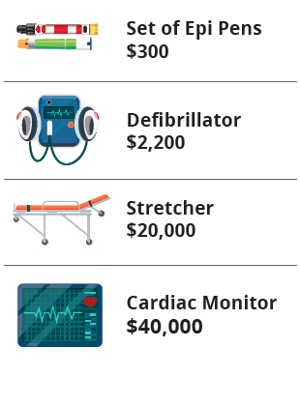
Loss prevention and tracking down expensive assets are important to the function of emergency vehicles and stations, and taking steps to make sure tools and assets are accounted for can save thousands of dollars in replacements and improve departmental audit results. Additionally, streamlining stocking processes can save costly trips, and personnel time, creating a more efficient and frugal operational system.
"We determined that we had a significant amount of broken, missing, expired, and excess volume relating to medical supplies. This constituted an unacceptable liability and financial problem.”
-- Rich Buchanon EMS Operations Lieutenant,
South Metro Fire Rescue
Using RFID Technology to Locate, Monitor and Replenish Supplies
When assets in an ambulance or on a fire truck are tagged with small RFID tracking tags, all it takes is a handheld or fixed scanner to immediately reveal which items are present, and which supplies have low levels and need restocking. Instead of manually counting each item, which leaves room for human error and takes up precious time from your team, you can know at a glance how many bandages, medicine bottles, tourniquets, syringes, and more have been used and need replenishing. Similarly, you’ll know if defibrillator, cardiac monitors, and stretchers made it back on board after a run.
RFID scanners can read the tags inside of cases and bags, without the containers even needing to be opened. Additionally, if you prefer, your asset tracking software can be set to automatically re-order from your suppliers when your storehouse inventory dips below a customized level, further saving you time and energy.
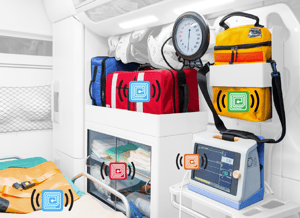
Locating Assets for Preparedness
When technicians need to track down machines and tools for configuration or inspections, it’s not always a safe bet that those items made their way back to where they should be. This means the technician wastes his or her own time tracking things down, instead of being able to simply do their job. And if something was left behind after a run, it may be impossible to recover, affecting your stations performance in audits. With the RFID tracking, a sensor placed above the entrance/exit doors of your building can track and determine whether or not everything inside the vehicle is still accounted for – and if it’s not, you know exactly what’s missing, and can find it easily thanks to its tag.
What’s Involved in Radio Frequency Identification (RFID) Technology?
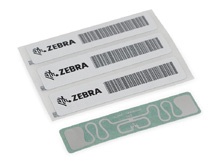 |
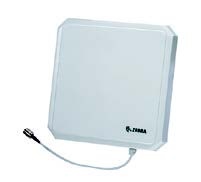 |
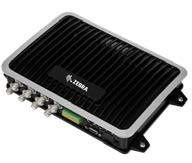 |
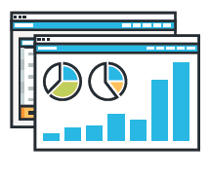 |
Items Tags
Affixed to the items being tracked, RFID tags contain data (such as location) about items.
|
Antennas
Acting as scanners, RFID antennas allow tags and readers to ‘talk’ with one another.
|
Readers
Available in handheld and fixed formats, RFID readers process data encoded on the tag.
|
Software
RFID software visualizes the location and related data for items being tracked by tags.
|
Stay on top of medication recalls and expirations
When medicine is recalled or expired, it needs to be pulled from shelves and vehicles in your facility as soon as possible. If a recalled or expired medication is administered to a patient, your organization can be held liable for any negative reactions or issues that might be associated with that medicine.
This is not only dangerous to your business, it’s dangerous to public health. RFID tracking solutions often come equipped with software that can detect when a recall has occurred, and notify staff immediately. Expiration dates can also be tracked, streamlining your processes for rotating medications out of use when needed.
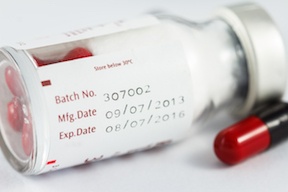
“There are now few errors because all counts and expiration dates of fall items are monitored. Inventory is ordered well in advance of expiration dates, and very rarely does any station run out of them.”
-- Richard Scott Deputy Chief, Bonita Springs Fire Control and Rescue District
Smart Shelf Technology
Additional options you may want to consider implementing, aside from utilizing RFID tagging within your emergency vehicles, is how RFID technology can be used in smart shelving. With smart shelves in place, you’ll be able to track inventory in your store room as succinctly as you can inside the vehicle. This will help you to know if medications or other consumables need reordering, which medications are set to expire or be pulled from stock, and when machinery are out for servicing or configuration. This will help you stay organized, save your emergency personnel crucial time, and help your organization ace any audits coming your way.